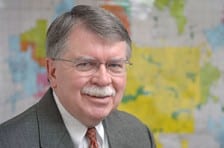Interchanges ahead?

.floatimg-left-hort { float:left; } .floatimg-left-caption-hort { float:left; margin-bottom:10px; width:300px; margin-right:10px; clear:left;} .floatimg-left-vert { float:left; margin-top:10px; margin-right:15px; width:200px;} .floatimg-left-caption-vert { float:left; margin-right:10px; margin-bottom:10px; font-size: 12px; width:200px;} .floatimg-right-hort { float:right; margin-top:10px; margin-left:10px; margin-bottom:10px; width: 300px;} .floatimg-right-caption-hort { float:left; margin-right:10px; margin-bottom:10px; width: 300px; font-size: 12px; } .floatimg-right-vert { float:right; margin-top:10px; margin-left:10px; margin-bottom:10px; width: 200px;} .floatimg-right-caption-vert { float:left; margin-right:10px; margin-bottom:10px; width: 200px; font-size: 12px; } .floatimgright-sidebar { float:right; margin-top:10px; margin-left:10px; margin-bottom:10px; width: 200px; border-top-style: double; border-top-color: black; border-bottom-style: double; border-bottom-color: black;} .floatimgright-sidebar p { line-height: 115%; text-indent: 10px; } .floatimgright-sidebar h4 { font-variant:small-caps; } .pullquote { float:right; margin-top:10px; margin-left:10px; margin-bottom:10px; width: 150px; background: url(http://www.dmbusinessdaily.com/DAILY/editorial/extras/closequote.gif) no-repeat bottom right !important ; line-height: 150%; font-size: 125%; border-top: 1px solid; border-bottom: 1px solid;} .floatvidleft { float:left; margin-bottom:10px; width:325px; margin-right:10px; clear:left;} .floatvidright { float:right; margin-bottom:10px; width:325px; margin-right:10px; clear:left;}
The U.S. interstate highway system was originally proclaimed by President Dwight Eisenhower as the National Defense Highway System.
Tom Kane has a better name.
“We should call it the National Economic Development Highway System,” said Kane, executive director of the Des Moines Area Metropolitan Planning Organization (MPO).
Greater Des Moines residents would agree.
An abnormally high total of 14 interchanges – seven new and seven reconfigured – are planned to be completed along Interstates 35 and 80 by 2035 according to the MPO’s recently completed Year 2035 Long-Range Transportation Plan. The plan, which is revised every four years, compiles all transportation projects in the metropolitan area, and lists them by target completion date in one five-year period and two 10-year intervals.
The total cost for all seven new interchanges would be $199.6 million, and $356.7 million for the seven reconfigurations, bringing the total cost for all interchange work to $556.3 million.
Although the plan is a “living document” and target dates and the projects themselves are far from concrete, the plea from communities in the Des Moines area is clear – give us interstate access.
“You look at any metro area interstate system, having proximity to that and access to that certainly helps,” said Kane, who has been with the MPO for 19 years. “And that is why we have so many interchanges being promoted and proposed. It goes back to economic development. And people have figured out that growth happens if you have proximity to the freeway system.”
Kane said the Federal Highway Administration (FHWA), which must approve all interstate interchange requests, would say the list for planned interchanges is exceptionally long. The long list caught the attention of Lubin Quinones, the new division administrator of the FHWA’s Iowa division, Kane said.
“One of his first things he did,” Kane said, “was call me in and call the district engineer from the Iowa Department of Transportation (DOT) and say, ‘Denver has two new interchanges, the Twin Cities have two, why do you have 14?'”
Doug Hecox, an FHWA spokesman, said in a statement that because every city has its own needs, there isn’t a gauge that relates to a quantity of interchanges as average, low or high. That being said, it is in the agency’s interest to ensure that all the interchanges, which can often improve overall traffic flow, don’t pose a potential problem and do serve the purpose of the interstate system.
“The interstate routes are planned to move traffic on a ‘regional’ basis and not just serve as a local arterial,” Hecox said in the statement. “Any time new interchanges are added to the system, it has an effect more broadly than some may realize.”
Cities wishing to link in with the interstate system must first do an Interchange Justification Report (IJR) showing that traffic and growth models, among other requirements, support the need for the interchange.
Although the locations for the interchanges do sometimes come as a result of traffic needs, and must be justified that way, Kane said he thinks the potential for economic development is also a main catalyst for the rash of interchanges in the plan.
“We have multiple interchanges being requested, and to say growth and economic development aren’t pushing a lot of them, that would be crazy,” Kane said. “I think the pressure is coming from local communities and their comprehensive planning process and their growth strategies want to take advantage of proximity.”
Since the 1990s, because of growth in the area, Kane said, communities have been aggressive with interchange requests, but the fact the MPO is discussing this many interchanges raises a red flag. He said the group is taking a look to see if all 14 are needed. There is also no guarantee that all the interchanges will get approved by the FHWA or that the cities will raise enough funding to make the projects happen.
Two of the seven new interchanges are planned to be completed during the first five-year period (2011 to 2015) of the MPO’s plan. Planned interchanges along I-80 at Alice’s Road in Waukee, and along I-35 at Northeast 36th Street in Ankeny will bring economic development opportunities to both communities. Here is an update on the progress at both locations:
I-80 and Alice’s Road:
The land surrounding Alice’s Road is begging to be commercially developed, and was one of the big reasons the city of Waukee joined up with West Des Moines to push for a bridge over I-80. That bridge, said Waukee City Administrator Jeff Kooistra, should be completed by late spring or early summer, and helps make the area more attractive for economic development.
“I think we know there is a large potential, and there is a lot of open ground right in there that would work for some great development,” he said.
Waukee’s population grew an estimated 119 percent to 12,000 from 2000 to 2007, according to U.S. Census Bureau estimates. And the growth is expected to continue, according to Kane.
“You can see in our maps of where growth is going to go, you can see Alice’s Road, and you can just see that is where future growth is going to fall,” he said.
Having the bridge is the first step, but without an interchange, Kooistra and Kane both said, the area won’t develop to its full potential.
“You can have the bridge over all day long, but if you don’t have ramps that allow you to get on and off, the road doesn’t have much value,” Kane said.
That’s why, Kooistra said, Waukee has made the $13 million project its top priority.
The city is currently in the process of redoing its IJR because of the spike in growth that the city has experienced in this decade. The city’s previous IJR didn’t get approval from the FHWA because the modeling numbers didn’t meet the thresholds at the time that were needed to justify an interchange. But Kooistra is hopeful, and thinks there is a very good chance the revised IJR will pass the requirements needed for the interchange.
“Some of these numbers are starting to pop a little bit more now that there is more employment out this way,” he said.
He said the city will submit the new report to the Iowa DOT and FHWA by next spring or summer. Sewer and water lines will be laid in the potential area for development in the next year, and if Waukee and West Des Moines – who are sharing the cost for the project – raise the necessary funding, and everything goes smoothly, Kooistra said optimistically the interchange would be open by 2011 or 2012.
I-35 & Northeast 36th Street:
Ankeny’s situation is a bit different.
Ankeny has seen its population grow to the north and west of the city. Because of this growth pattern, the interchange at First Street is now unable to accommodate the traffic load, said Tim Moerman, the city’s economic development director. Traffic regularly backs up at the interchange during rush hour, and a new interchange approximately 2 miles north of First Street at Northeast 36th Street would help alleviate the hazard.
Ankeny’s proposal for the $28.1 million interchange – which would be built on the east side of I-35 to avoid interfering with Otter Creek Golf Course – is further along in the lengthy, red-tape-filled approval process.
The city already had its IJR approved and approved an agreement with the Iowa DOT to build the interchange.
Much of the funding for the project is already secured, and Kane said that relative to other projects, the interchange in Ankeny has proceeded quickly. Moerman said the project is scheduled to be completed by fall 2012.
With the interchange comes the potential for economic development.
John Peterson, Ankeny’s director of planning and building, said most of the property owners in the area, but not all, have an interest in development.
The city is currently working on its comprehensive plan, and the interchange is a major piece of that plan. Peterson said several large parcels of land have been annexed into the city near the proposed interchange, and there is a sanitary sewer trunk line that links to the area, with a water main planned to be built with the construction of the interchange.
Peterson said he would expect the land to be used for a mixed-use business park, office and flex space, and also the potential for hotel and restaurants that could benefit from being near the golf course.
He said land to the northwest quadrant of the interchange area could be ideal for a hotel or residential condominiums that would have views of the golf course.
“For me, I’ve been here 30 years and watched all of our interchanges mature over time,” Peterson said. “And I think those are the places where Ankeny touches the region and people see and measure the growth of the community by what they see driving past Ankeny or through Ankeny on the interstate.”
A reconfiguration of the First Street interchange is scheduled during the 2016 to 2025 portion of the MPO’s plan, but won’t be tackled until the completion of the Northeast 36th Street project. Removing the First Street interchange first would create a traffic nightmare on I-35, Moerman said.








